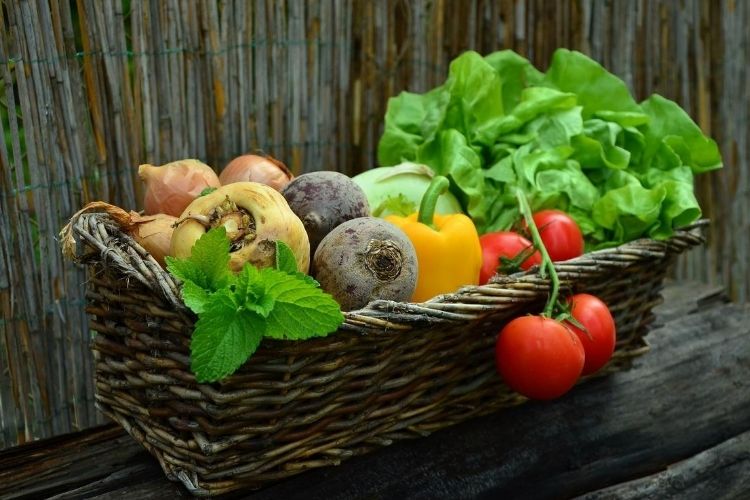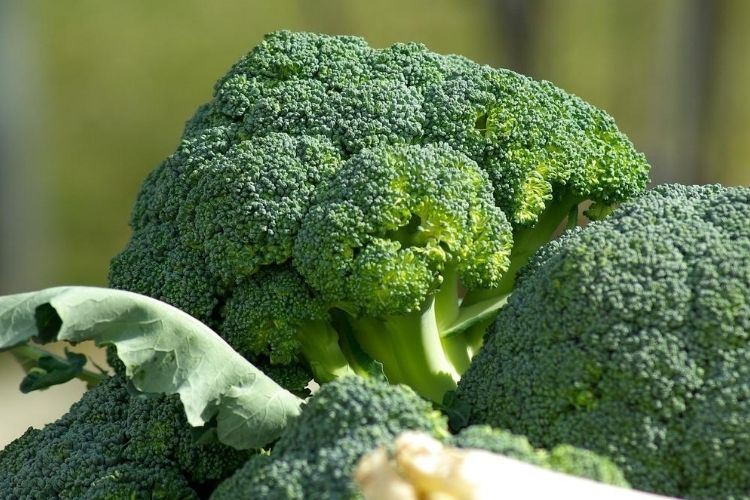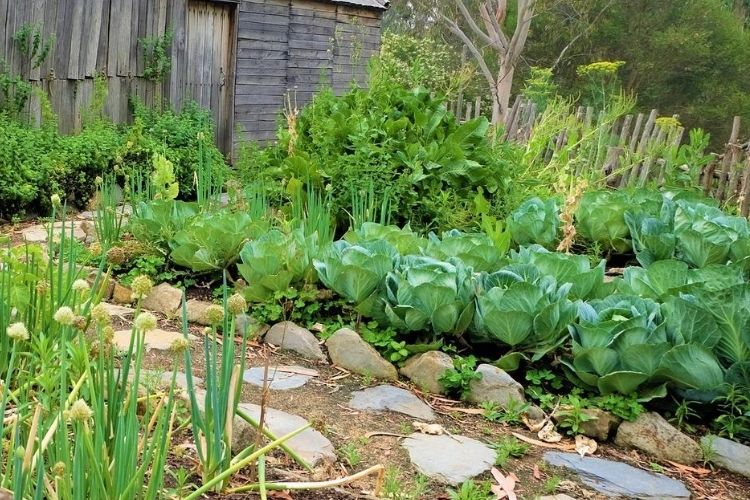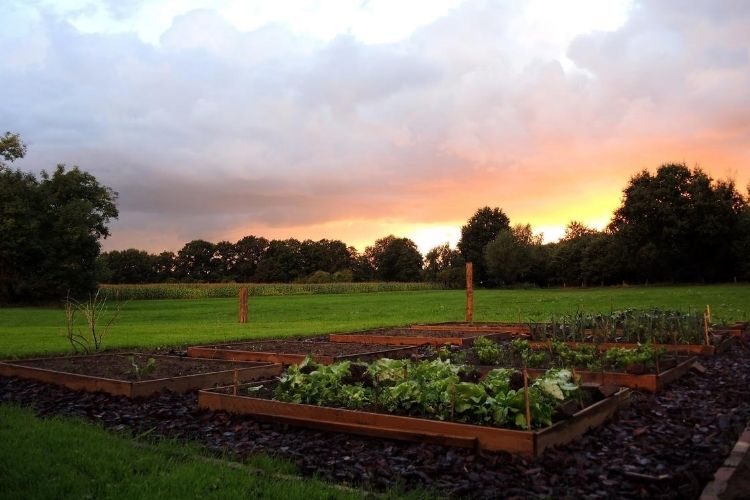A totally ready, succulent tomato, despite everything warm from the sun. Sweet carrots, pulled from the nursery minutes (or even seconds!) before they’re eaten. Developing your own vegetables is one of those exercises that adjusts common sense and guilty pleasure. Notwithstanding the comfort of having the fixings for a serving of mixed greens or light dinner directly outside your entryway (or on your windowsill), when you develop your own vegetables, you’re getting the most nourishing value for your money too. Vegetables begin losing supplements when they’re reaped, and quality reduces as sugars are transformed into starches. For the most delicious veggies with the best sustenance, have a go at growing a couple of these supplement thick nourishments in your own nursery. Also, don’t let the absence of a yard stop you — every one of them can be developed in holders too.
1. Broccoli
Broccoli is high in calcium, iron and magnesium, just as nutrients A, B6 and C. Truth be told, one cup of crude broccoli florets gives 130 percent of your day by day nutrient C prerequisite.
- Step by step instructions to develop broccoli
- Develop broccoli in compartments: One broccoli plant for every pot, pots ought to be 12 to 16 inches down.
- What to keep an eye out for: Cabbage worm. In the event that you begin seeing pretty white butterflies vacillating around your broccoli, you’re ensured to begin seeing minimal green worms all over your broccoli plants. To keep away from this, spread your broccoli plants with skimming column spread or lightweight bed sheets. On the off chance that you begin seeing cabbage worms, just take them out by hand.
2. Peas
There is not at all like peas developed right in your own nursery — the delicate pleasantness of a snap pea simply culled from the plant is not normal for anything you can purchase in at a store. Beside being totally delightful, peas are high in fiber, iron, magnesium, potassium, and nutrients A, B6 and C.
- The most effective method to develop peas
- Develop peas in compartments: Sow peas roughly 2 inches separated in a pot that is at any rate 10 inches down. Offer help for peas to move up.
- What to look out for: Hot climate. When the climate turns hot, pea creation will basically close down. Develop peas in late-winter and pre-fall/harvest time, or whenever of year when temperatures are reliably somewhere in the range of 40 and 85 degrees Fahrenheit.
3. Beans (particularly naval force beans, incredible northern beans, kidney beans)
While snap beans (green beans/wax beans) are an incredible expansion to any garden, it’s the beans we develop as dried beans that are genuine nourishing forces to be reckoned with. Dried beans, when all is said in done, are high in iron, fiber, manganese and phosphorous.
- The most effective method to develop beans
- Develop beans in compartments: Bush beans are your most ideal choice for developing in holders. Plant beans four inches separated in a holder that is in any event 12 inches down.
- What to keep an eye out for: Harvest at the opportune time. Collect dry beans when the units have totally dried on the plant. The cases ought to be light earthy colored, and you ought to have the option to feel the hard beans inside. Shell the beans, and let them pass on a couple of days to guarantee that they’re totally dry before putting away them in containers in a cool, dull, dry spot.
4. Brussels sprouts
The worst thing about numerous an adolescence, Brussels sprouts get negative criticism for the most part due to overcooking. At the point when arranged right, Brussels sprouts are sweet, delicate and scrumptious. They additionally give huge amounts of fiber, magnesium, potassium and riboflavin, just as elevated levels of nutrients A, B6 and C.
- The most effective method to develop Brussels sprouts
- Develop brussels sprouts in compartments: Grow one plant for each 16-inch holder.
- What to keep an eye out for: Cabbage worms (see “Broccoli,” above.)
5. Tomatoes
New, homegrown tomatoes are the explanation numerous cultivators get into vegetable planting in any case. Just nothing analyzes to eating a completely ready tomato, despite everything warm from the sun. Tomatoes are likewise unfathomably bravo, pressing a lot of fiber, iron, magnesium, niacin, potassium, and nutrients A, B6 and C. They’re likewise an extraordinary wellspring of the cancer prevention agent lycopene.
- The most effective method to develop tomatoes
- Develop tomatoes in holders: Container sizes will change contingent upon the assortment you’re developing. In case you’re growing an uncertain assortment, your compartment should be at any rate 18 inches down. For determinate assortments, 12 inches is a decent profundity, and for diminutive person or “porch” type tomatoes, 8 inches is great. One tomato plant for every pot.
- What to keep an eye out for: Tomato horn worm can be an issue in numerous territories — these huge caterpillars ought to be evacuated by hand at whatever point you see them. Likewise keep an eye out for indications of scourge, which is a genuine issue in numerous pieces of the U.S.
6. Red chime peppers
Red chime peppers are high in potassium, riboflavin, and nutrients A, B6, and C — indeed, one cup of red ringer pepper packs an astonishing 317 percent of the suggested day by day remittance of nutrient C and 93 percent of the suggested nutrient A.
- The most effective method to develop peppers
- Develop peppers in holders: Plant one pepper plant for every 8 to 12 inch pot.
- What to keep an eye out for: Aphids and bug creepy crawlies are the two most normal bug bothers when developing peppers. While both can be controlled with insecticidal cleanser, which is a typical natural alternative, you can likewise make all-characteristic, natively constructed showers to prevent these vermin. A tomato leaf splash will dispose of aphids, and garlic/hot pepper shower works very well on an insect scarab pervasion.
7. Beets
Beets are an incredible “two-fer” crop — you can collect the beet roots, obviously, however you can likewise reap and eat the greens. Youthful beet greens are tasty when added crude to a serving of mixed greens, and bigger beet greens can be sauteed as a fast side dish or utilized the manner in which you’d utilize different greens, for example, spinach. (In addition: 5 plans for beet greens.) Beet establishes are high in iron, potassium and nutrient C. Beet greens are shockingly better, as they are high in iron, calcium, magnesium, potassium, zinc, and nutrients A, B6 and C.
- Step by step instructions to develop beets
- Develop beets in holders: Plant beet seeds three inches separated in a compartment that is 12 inches down. Since every beet seed is really a group of seeds, make certain to thin the seedlings to one for each bunch. Thinnings can be added to servings of mixed greens or sandwiches.
- What to keep an eye out for: Knowing when to reap. Beet roots are at their best when they are gathered little — somewhere in the range of one and two creeps over. At this size, they are sweet and delicate. Bigger beets will in general be somewhat woody and less tasty.
8. Leaf amaranth
Leaf amaranth is a more uncommon vegetable that is definitely justified even despite an attempt in your own nursery. The leaves have a sweet and somewhat tart flavor that functions admirably in an assortment of dishes, from pan-sears and soups to just steaming everything without anyone else. As a little something extra, leaf amaranth is one of only a handful scarcely any warmth lenient greens. It won’t jolt in the warmth of summer the manner in which spinach and kale are inclined to. Healthfully, leaf amaranth is high in calcium, iron, magnesium, phosphorous, potassium, riboflavin, zinc, and nutrients A, B6 and C. Everybody ought to be developing this!
- The most effective method to develop leaf amaranth
- Developing leaf amaranth in compartments: Scatter the little seeds over the dirt’s surface in a pot that is in any event 8 inches down. Collect the leaves when they are two to four inches tall. You will have the option to get in any event a few harvests before you’ll need to plant more seeds.
- What to keep an eye out for: Leaf amaranth is genuinely simple to develop, and generally issue free. Seldom, leaf diggers can turn into an issue.
9. Carrots
Carrots are at their best, crunchiest best when newly gathered from the nursery. These symbols of smart dieting merit their “bravo” rep — they’re high in fiber, manganese, niacin, potassium, and nutrients A, B6 and C. Their lone disadvantage is that they do will in general be high in sugar, so in case you’re viewing your carb admission, you’ll need to confine the measure of carrots you eat.
- Step by step instructions to develop carrots
- Develop carrots in holders: Sow carrot seeds a few inches separated in a pot that is in any event 12 inches down. Search for shorter assortments, for example, Thumbelina or Danvers Half Long.
- What to keep an eye out for: Harvesting at the ideal size. Carrots are at their most delicious when collected little. Leaving them in the ground too long can bring about excessively enormous, woody carrots. You’ll additionally need to make a point to keep your carrots equally damp, as letting the dirt dry out time after time can likewise bring about to some degree harsh, sinewy carrots.
10. Verdant greens
Alright, I cheated here. I can’t suggest only one verdant green, since they are altogether fantastically bravo, just as delightful — kale, collards, spinach, turnip or dandelion greens — by what means can you pick only one? When all is said in done, the “green leafies” contain high measures of calcium, iron, potassium, and nutrients A, B6 and C.
- The most effective method to develop kale and other verdant greens
- Develop greens in holders: Grow one kale or collard plant per ten inch pot. Different greens can be grown a f




